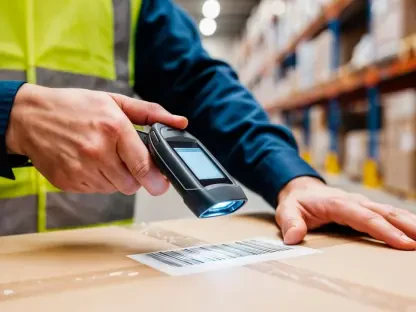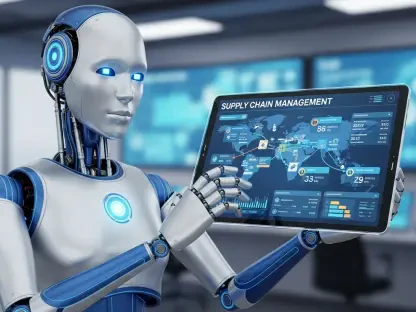In a world where supply chain disruptions can cost companies millions in mere days, imagine a system so smart it predicts bottlenecks before they happen and slashes waste overnight, transforming chaos into streamlined success. This isn’t science fiction—it’s the reality being crafted by industry giants Hershey and Gallo. Through the power of artificial intelligence (AI) and decision intelligence, these consumer goods leaders are rewriting the rules of efficiency. Their groundbreaking approaches offer a glimpse into how technology can solve some of the most pressing challenges in modern logistics.
The significance of this story lies in its urgency and universal impact. Supply chains are the backbone of global commerce, yet inefficiencies plague even the most established players with delays, shortages, and soaring costs. Hershey, a titan in confectionery, and Gallo, a powerhouse in the wine industry, are not just adapting—they’re leading a revolution. Their strategic use of AI to tackle specific pain points provides a blueprint for businesses across sectors, proving that technology, when applied with precision, can deliver rapid results and long-term transformation.
The Urgency of Supply Chain Innovation
Today’s market is a pressure cooker of rising operational costs, unpredictable global events, and consumer expectations for lightning-fast delivery. Companies that fail to optimize their supply chains risk not just financial loss but also irrelevance. Hershey faces challenges like material shortages that threaten production timelines, while Gallo grapples with complex logistics networks spanning vast distances. Both recognize that innovation isn’t optional—it’s a lifeline to stay competitive in an unforgiving landscape.
Their adoption of AI reflects a broader industry pivot toward data-driven solutions. With supply chain disruptions costing businesses an estimated $4 trillion globally each year, according to a 2025 industry report, the stakes couldn’t be higher. Hershey and Gallo are addressing these high-stakes issues head-on, using technology to cut costs, boost availability, and ensure products reach shelves without delay, setting a standard for others to follow.
Hershey’s Precision-Driven AI Strategy
At the heart of Hershey’s transformation is a laser-focused approach to problem-solving. Douglas Guilherme, global VP of supply chain, emphasizes starting with specific issues like loss prevention and material optimization. By standardizing planning rules and fine-tuning the balance between supply and demand, Hershey has curbed waste and minimized manufacturing hiccups, achieving notable savings within just 90 days of implementation.
This success is backed by a metrics-driven system that tracks daily progress and user engagement, ensuring accountability across teams. Such transparency has been key to gaining stakeholder support, as data reveals where inaction occurs and highlights tangible outcomes. Hershey’s commitment to measurable impact shows how AI can turn abstract goals into concrete results, reshaping operational efficiency from the ground up.
Looking ahead, Hershey aims to push boundaries further with initiatives like load and truck optimization and touchless order management. Plans for a “self-healing supply chain,” powered by generative AI and autonomous agents, signal an ambition to preempt disruptions before they strike. This forward-thinking mindset positions Hershey as a pioneer in proactive supply chain management.
Gallo’s Automation Edge in Logistics
Meanwhile, Gallo is carving its own path by automating logistics workflows to unlock significant cost savings. Nitin Murali, VP of supply chain, focuses on clarity in decision-making inputs as the foundation for success. Through techniques like dynamic order fulfillment and stock rebalancing, Gallo has saved half a million dollars in freight costs within a single year, starting from 2025, with more optimizations on the horizon.
The company’s vision extends beyond immediate gains, targeting a shift from outdated batch systems to seamless, asynchronous orchestration. This approach aims to streamline operations by ensuring real-time adaptability in logistics processes. Murali’s strategy demonstrates how automation can transform complex networks into agile, cost-effective systems that respond to market demands with precision.
Gallo also plans to dismantle organizational silos, aligning departments like marketing with supply chain objectives for a unified efficiency model. This interconnected framework promises to maximize resource use and eliminate redundancies. By prioritizing automation and integration, Gallo is building a supply chain that’s not just reactive but strategically anticipatory.
Insights from Industry Leaders
Hearing directly from the architects of these transformations adds depth to their impact. At a recent industry event hosted by Aera Technology, Hershey’s Guilherme shared, “Clarity on the problem drives our results, not just the tech itself.” This mindset fuels their quick wins, with daily user engagement metrics reinforcing change management and showcasing savings that stakeholders can trust.
Gallo’s Murali echoed a similar sentiment, stating, “Clear inputs for decision-making are critical to automation’s success.” This principle is evident in their reported half-million-dollar cost reduction, a figure that underscores the real-world value of AI. These firsthand perspectives, paired with hard data, highlight the credibility and immediacy of technology’s role in reshaping supply chain dynamics.
The convergence of thought between these leaders reveals a shared belief in starting with well-defined challenges. Their insights serve as a powerful reminder that AI’s potential is unlocked not by its complexity but by its alignment with specific, actionable goals. This philosophy is a guiding light for any business seeking to emulate their achievements.
Practical Lessons for AI Adoption
For companies inspired to follow in the footsteps of Hershey and Gallo, a clear roadmap emerges from their strategies. Begin by pinpointing exact inefficiencies—be it material waste or delivery delays—before investing in technology. Creating a prioritized list of pain points ensures efforts remain focused and impactful from the outset.
Next, harness actionable data with tools that offer real-time insights, much like Hershey’s daily monitoring systems, to track progress and secure team buy-in. Starting with small-scale pilot projects, as Gallo did with freight savings, allows for quick wins that build momentum for larger investments. These initial successes can pave the way for broader adoption across operations.
Finally, design systems for interconnectivity to align cross-functional goals, and explore cutting-edge innovations like generative AI for future-proofing. By planning for scalability and adaptability, businesses can create supply chains that not only solve today’s problems but also anticipate tomorrow’s challenges. These steps offer a practical guide for transforming operations with AI.
Reflecting on a Tech-Driven Legacy
Looking back, Hershey and Gallo demonstrated that AI and decision intelligence were game-changers in navigating the intricate web of supply chain management. Their journey showed that starting with defined problems and implementing targeted solutions led to remarkable savings and efficiency gains. As their stories unfolded, they set a powerful precedent for the industry.
The path forward invites other companies to take bold steps by adopting similar problem-first approaches and investing in data-driven tools. Exploring partnerships with tech innovators could accelerate this transformation, ensuring supply chains become more resilient. Their legacy challenges businesses to rethink operations, prioritizing adaptability in an ever-evolving market.
Considering the broader impact, their success highlighted the potential for AI to redefine not just logistics but entire business ecosystems. Companies were encouraged to delve into autonomous systems and cross-departmental integration as the next frontier. This reflection on their achievements pointed toward a future where technology and strategy combined to create enduring operational excellence.









